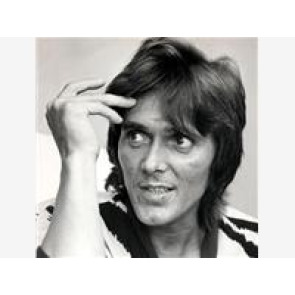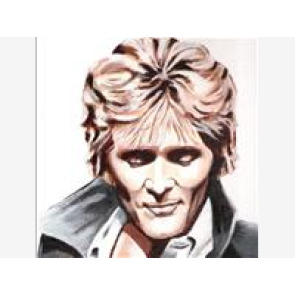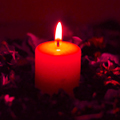BILLY FURYAt the end of the 50s when teen idols were 10-a-penny, Billy Fury, who died on 28 January, 1983, laid waste to his rivals with songs of gut-wrenching honesty.Cripplingly shy off stage but a force of nature on it, his self-penned first album “The Sound of Fury” in 1960 was the platform for five years of chart and big screen success, before the health problems that had plagued and inspired his work began to take their toll.Mr Fury retired to the country, and although he returned to films in the '70s and to music in the early '80s, he died following the latest of a number of heart attacks.Ronald William Wycherley was born on 17 April, 1940 in Sefton, Lancashire , a thin and weak child who revelled in solitary pursuits such as poetry and birdwatching.When he contracted rheumatism aged 14 and overheard doctors telling his mother that he would not live past 30, he again spent long periods alone convalescing, later admitting that he had had to learn to live with the knowledge that his life could end suddenly at any time.Legend has it that he went to a Marty Wilde gig to play him some songs, but the notorious impresario, Larry Parnes, pushed him on stage, where he was such a hit that he was signed up for the rest of the tour and given the name, Billy Fury.In 1960, he reached no.9 with “Collette” and released “The Sound of Fury”, after which he became such a star that the Beatles—then the Silver Beatles—auditioned as his backing band and were turned down, although not before John Lennon had obtained his autograph.A year later, he had two no. 2 hits with “Halfway to Paradise” and “Jealousy”, and despite the best efforts of his label to make him more clean-cut, the intensity of his live performances rendered even the most saccharine ballad raw and uncut.Frequently billed as “Britain’s Elvis”, he inevitably ended up in movie vehicles such as 1962’s “Play it Cool” and three years later, “I’ve Gotta Horse”, but it was on record and on stage where he remained most at home, admitting in one interview, “I’m an exhibitionist on stage but I can’t tell anyone about myself, I freeze up. I don’t want anyone to know.”After the hits dried up in 1967, and his health began to deteriorate, Mr Fury retired to Wales, where once more he indulged his passion for ornithology and wildlife, developing his farm into something of a wildlife sanctuary, and even fraternising with the hunt saboteur movement for a while.He appeared in the 1973 movie, “That’ll Be the Day”, alongside David Essex and Ringo Starr, and from 1981-2, he signed to Polydor and recorded a new album “The One and Only”, released a year later, after his death.He married briefly in 1969, and then lived with property heiress Lisa Rosen from 1971 until his death.He was drawn not only to the peace but to the cruelty of the English countryside, where by taking in injured foxes, badgers and birds of prey, he could tend to animals as well as observe them.Living a life that was a mixture of Billy Casper and Jimmy Porter, Mr Fury was an unlikely rock ‘n’ roll sensation, but only Elvis, The Beatles and Cliff Richard scored more chart successes than him during the 60s.And later generations have picked up the baton: one of his musical heirs, Stephen Patrick Morrissey, said of him, “Billy’s singles are totally treasurable. I get quite passionate about the vocal melodies, and the orchestration always sweeps me away. He always had such profound passion.”
Keep me informed of updates






